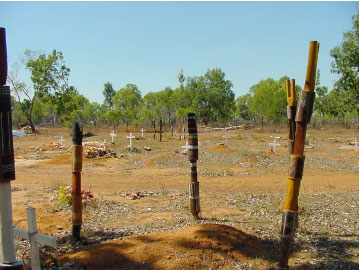Echo Cluster Research
Suicide Contagion and Imitation
This research began by exploring whether suicide contagion is operating within Indigenous settings and whether it is a robust risk factor for Indigenous suicide. Examination of imitation within clusters of suicide in Indigenous communities largely supports a contagion effect operating and validates my original research hypothesis. It also supports the notion that there is an individual and a collective unique vulnerability to the idea and act of suicide within Indigenous settings, which then becomes contagious.
Suicide contagion has been identified, and is a strong predictor of imitative suicide in Indigenous settings, particularly the method of hanging as a behavioural contagion. Recent research has supported the notion that suicide has become a cultural contagion with hanging being almost culturally scripted, and copied virtually to the exclusion of other methods.
Suicide contagion, imitation and repetition have occurred within Indigenous family groups, kinship groups, friendship circles and close knit communities, and also across geographically/tribally related communities. Some of the geographical settings for suicide have been referred to as 'remote ghettos' and 'with impoverished urban fringe dwellers', and it is within these settings that the contagion rapidly spreads.
The spread of this contagion has reached our most vulnerable in the population, Indigenous children and youth. With the growing use of modern technologies, children and youth are more vulnerable to news of a recent suicide with cyber bullying, blaming, guilt and shame contributing to the risk of imitation and contagion. How do we use this technology to our advantage to protect our young children and youth in this rapidly changing world?
The reach of news of a suicide spreads across the age continuum, with children, youth and adults copying the behaviour of relatives and friends, which then rapidly spreads across huge geographical spaces, so that the suicidal behavioural contagion is communicated in both life and death. There has also been a pattern to the suicide contagion identified within Indigenous community settings. The pattern observed begins with several imitative suicide attempts, punctuated by completed suicides, and further attempted suicides, with this pattern repeating or echoing over time. It is producing widespread suicide contagion within family groups, kinship/skin groups, and close knit communities. These dense social networks and strong kinship systems involve responsibility and reciprocity and can inadvertently support the contagion effect, thus making Indigenous people vulnerable. But conversely, if skilfully utilised can provide a successful intervention to contain suicide contagion.
Contagion, that is, cultural, familial and imitative behavioural contagion, appears to be integral to the process of clustering for both attempted and completed suicide. The negative social and cultural determinants of suicide and the resultant imitation and contagion within Indigenous communities conspire to make it difficult to plan appropriate responses and rituals to contain suicide clusters, yet it is essential that the rituals and responses are performed. Timely postvention support , which includes grief and pastoral counselling can mediate the expression of grief in a culturally safe and spiritually reconciling and restorative environment, and is fundamental to healing and forgiveness. Postvention response plans, that include suicide prevention life 'hope' promoting brief interventions, 'contact tracing' of those vulnerable to internalising the idea of suicide and who are already troubled and consequently at risk of suicide, are then necessary to identify suicide contagion, respond to and contain contagion, thereby preventing further suicides. Urgent collaborative interventions are needed to prevent this robust contagion from spreading.
The suicide contagion effect within Indigenous communities is a tragic account reflecting the impact of social, emotional, spiritual, cultural and physical changes and the vulnerability of Indigenous people, families and communities to these changes. Suicide contagion can be reduced, contained and extinguished with appropriate and timely interventions and action on the social, cultural and spiritual determinants of suicide.
For models of response see: Bereavement - Indigenous Postvention Model and Suicide Containment Model.
> Read more about Suicide Clusters
> Read more about Echo Clusters
Articles

Christian faith, belief in forgiveness, reconciliation and the resurrection provide comfort and hope to the family of loved ones lost to suicide, in the context of traditional Tiwi Pukamani burial ceremonies.